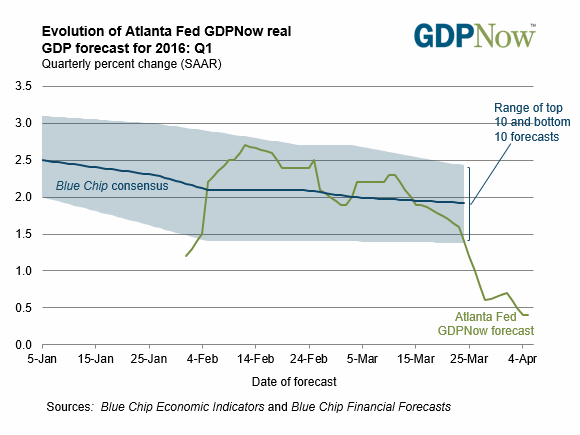The ongoing collapse of the velocity of M2 money supply screams loud on clear: YES. As the St. Louis Fed pointed out yesterday, M2 money velocity—the ratio of nominal GDP to the average of the money stock—has fallen to record lows, based on numbers dating to 1959. That’s a powerful sign that the crowd has a strong—and still growing–appetite for safe-haven liquidity. Therein lies Exhibit A for explaining why the post-2008 economic recovery has been unsatisfying.
“In general, the velocity of money starts to increase after a recession is over, when confidence is restored,” the St. Louis Fed explained in a blog post on Thursday. “However, since 2007, the velocity of money in the U.S. has been decreasing, which means consumers and firms are still holding onto cash instead of spending it. This behavior, which also reflects a decrease in inflation, suggests that confidence in the recovery is still low. When confidence is restored, we should expect to see a rebound in the velocity of money.”
Based on the chart above, however, a rebound that boosts confidence is nowhere on the horizon.
If this sounds familiar, well, it is. An unhealthy craving for safety was a concern in 2011, for instance, when I asked: “Are We Facing Another Troubling Rise In Money Demand?” The numbers suggested the answer was “yes” at the time and nothing much has changed five years on. In fact, you can argue that conditions are deteriorating via the chart above. Granted, the economy is expanding, but in fits and starts. Meantime, stock prices are higher but Treasury yields are lower and perhaps set to fall even more.
Economist David Beckworth this week commented that “the safe-asset shortage problem is back. Actually, it never went away but drifted into the background as the symptoms of this problem–sluggish growth and low interest rates–became the norm.”
It’s hardly a challenge that’s limited to the US, Beckworth adds. Ten-year government bond yields the world over share an unhealthy capacity for inching ever lower. Short-term pops notwithstanding, the broad trend remains unmistakably down for the price of money, Beckworth reminds via a chart:
For the casual observer, the sight of money velocity collapsing to multi-decade lows is a head-scratcher. After all, hasn’t the Federal Reserve “pumped” record amounts of liquidity into the economy in recent years? Yes, by some measures. So, why hasn’t the “money printing” had a bigger impact on lifting growth? The first chart above offers a clue, namely: money demand has (continued) to rise faster than money supply. The net effect delivers a weight on interest rates and growth.
There’s a sea of debate about what to do to remedy the situation. But as we approach the eight-year anniversary since the collapse of Lehman Brothers–and the global financial meltdown that followed—it’s obvious that real-world solutions that are politically feasible and economically sound are in short supply.
The good news is that a new recession for the US still looks like a low-probability event for the near term, based on a spectrum of indicators through February. At the same time, the craving for safety will probably keep a lid on growth.
In fact, that lid is expected to become quite a bit heavier when the Bureau of Economic Analysis publishes its first estimate of first-quarter GDP growth later this month. The Atlanta Fed’s GDP nowcast for Q1 (as of Apr. 5) is a weak 0.4%. There’s a long list of reasons why growth continues to disappoint, but the trouble starts with ongoing collapse in money velocity.



Pingback: Collapse of Velocity of M2 Money Supply - TradingGods.net